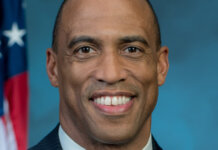Housing starts in May came in weaker than forecast at an annual rate of 1.269 million, a decrease of 0.9% compared with a revised rate of 1.281 million in April and down 4.7% compared with 1.332 million in May 2018, according to estimates from the U.S. Census Bureau and U.S. Department of Housing and Urban Development.
Starts of single‐family homes were at a rate of 820,000, a decrease of 6.4% compared with a revised rate of about 876,000 in April.
Starts of multifamily properties (five units or more per building) were at a rate of 436,000, an increase of 13.8% compared with about 383,000 in April.
Regionally, combined single-family and multifamily starts in May increased 11.2% in the South but fell 45.5% in the Northeast, 8.0% in the Midwest and 2.4% in the West.
Building permits were at a seasonally adjusted annual rate of 1.294 million, an increase of 0.3% compared with a revised 1.290 million in April but down 0.5% compared with 1.301 million in May 2018.
Permits for single‐family homes were at a rate of 815,000, an increase of 3.7% compared with a revised 786,000 in April. Permits for multifamily properties were at a rate of 442,000, down 3.7% compared with 459,000 in May 2018.
Regionally, permits increased 6.8% in the South and 1.8% in the West but fell 24.6% in the Northeast and 8.4% in the Midwest.
In a statement, Danushka Nanayakkara-Skillington, assistant vice president of forecasting and analysis for the National Association of Home Builders (NAHB), points out that although housing starts fell slightly, the decline “is off a solid upward revision in April.”
“This is another indicator that ongoing builder supply-side concerns are making it more difficult to build homes at affordable price points,” Nanayakkara-Skillington says. “We expect single-family housing starts to remain flat through 2019.”
With regard to the increase in permit activity, Greg Ugalde, chairman of NAHB, says it “echoes the stabilization we are seeing in our builder confidence survey.”
“While the increase in permits is a positive sign for the housing market, there are still affordability concerns throughout the country, especially in high-cost areas,” Ugalde adds.










